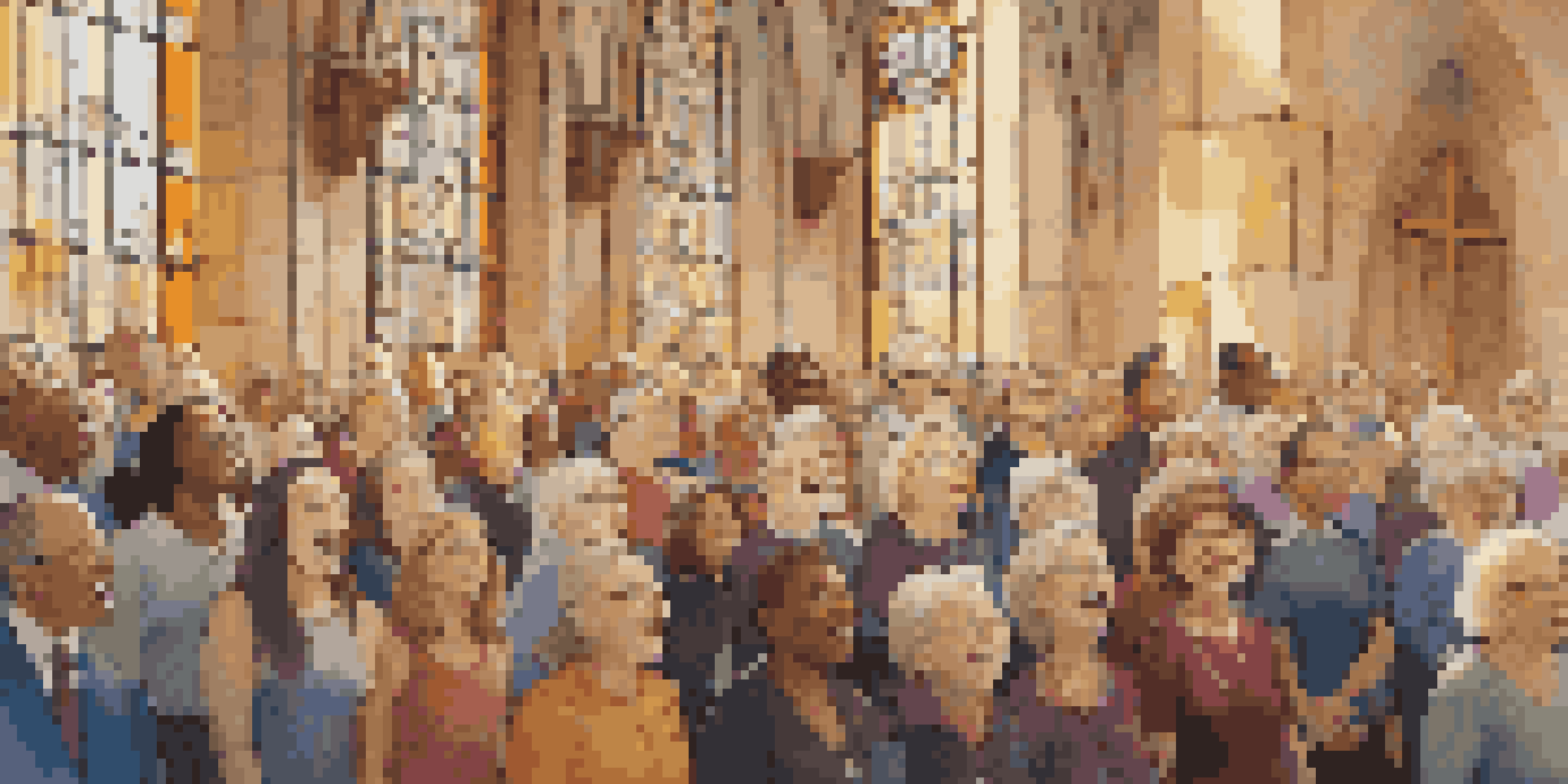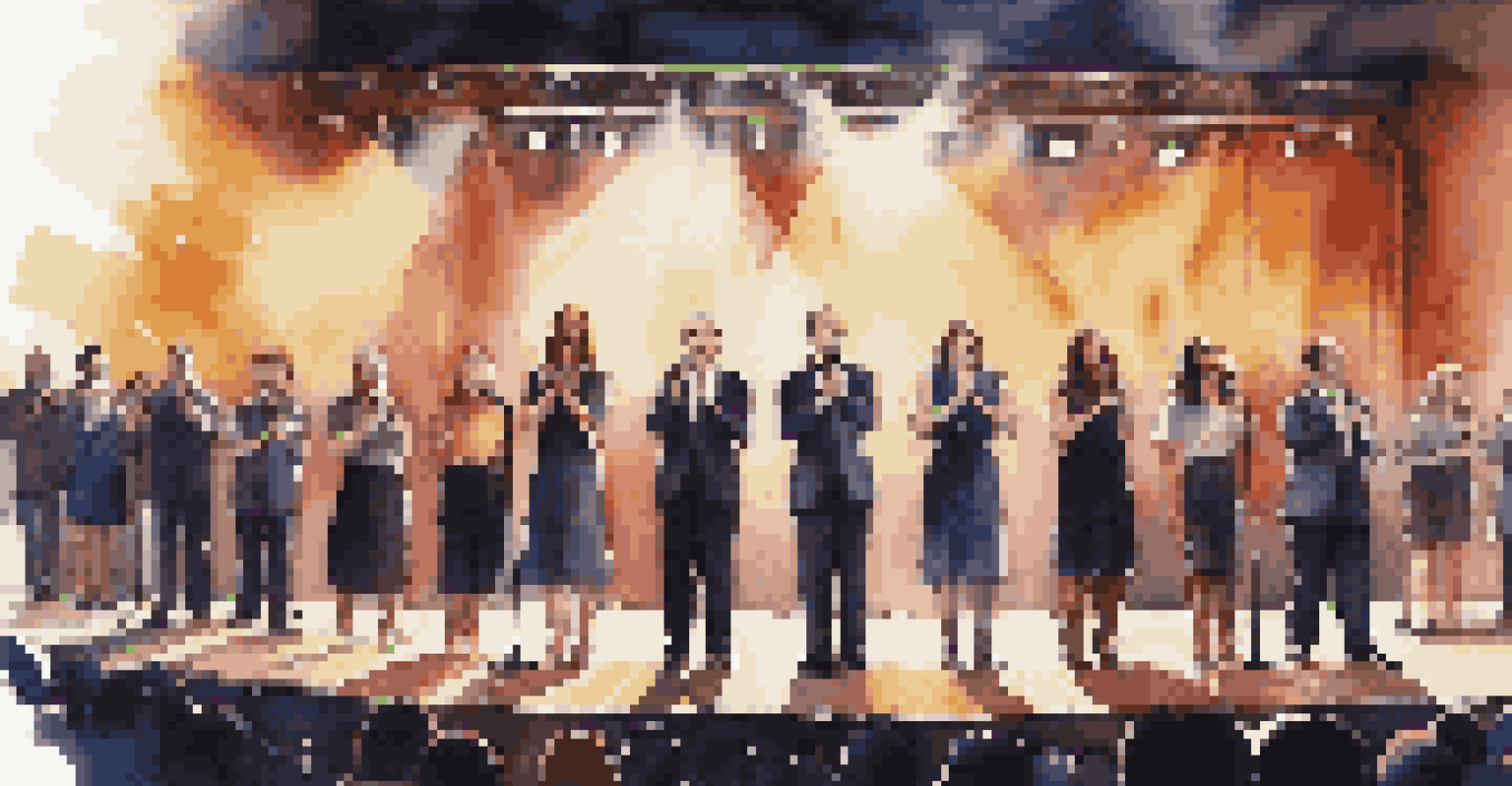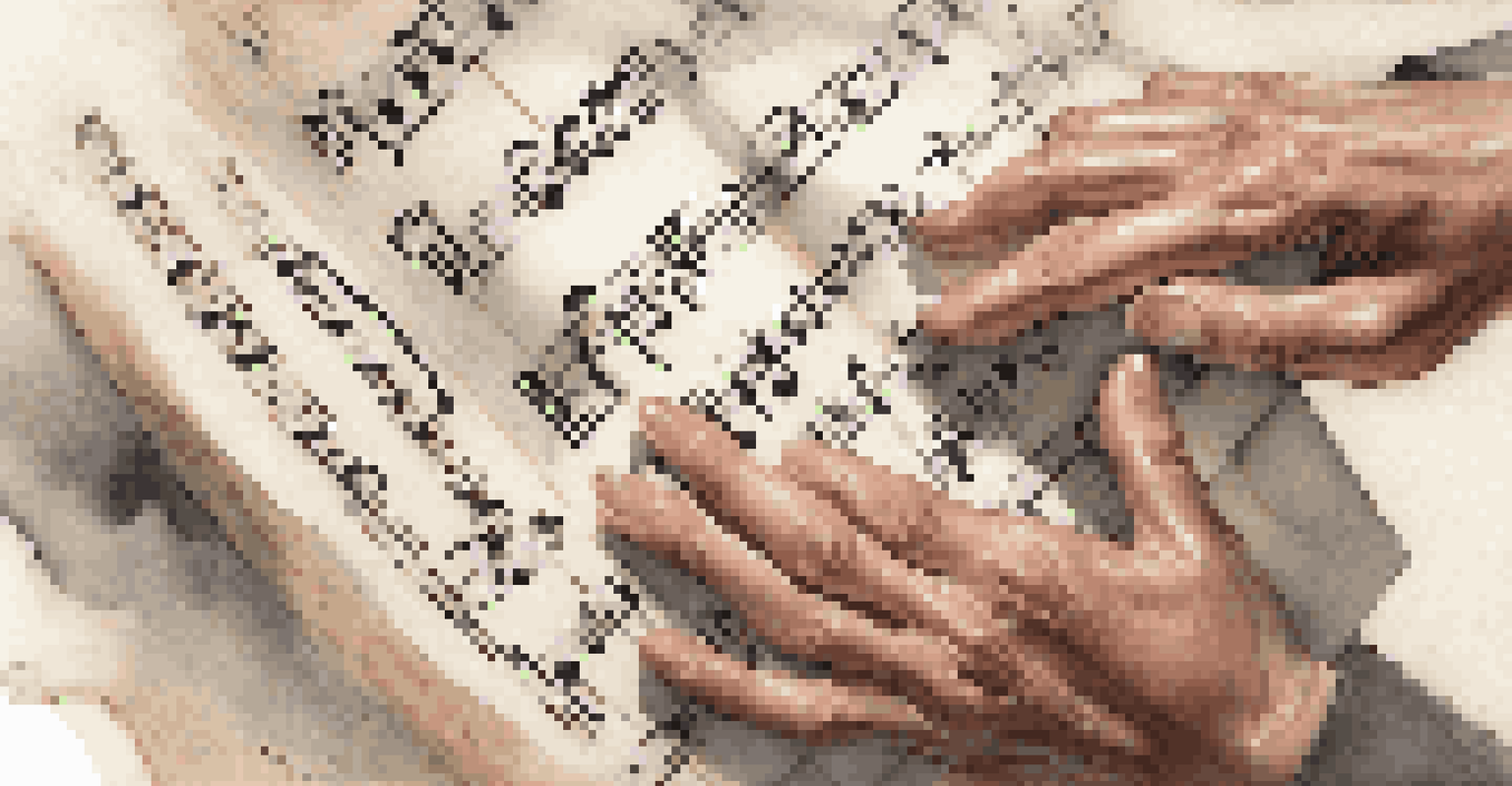The Evolution of Choral Music: Tradition and Modern Adaptations

Understanding the Roots of Choral Music
Choral music has a rich history that dates back to ancient civilizations, where singing was often intertwined with rituals and ceremonies. From the early Gregorian chants of the Middle Ages to the ornate polyphony of the Renaissance, choral music has served both spiritual and artistic purposes. These early forms laid the groundwork for the diverse choral traditions we know today.
Music is the shorthand of emotion.
As communities grew, so did the complexity of choral arrangements, reflecting the societal changes and cultural influences of the time. For instance, the rise of secular music during the Renaissance expanded the scope of choral compositions, allowing for a blend of sacred and worldly themes. This evolution demonstrates how choral music can adapt to the needs and values of society.
In essence, understanding the roots of choral music gives us insight into its continual evolution. Each era contributed unique styles and techniques, enriching the choral repertoire. As we delve deeper into its history, we can appreciate the intricate tapestry that has shaped choral music into what it is today.
Choral Music in the Religious Context
Historically, much of choral music has been tied to religious practices, serving as a means of worship and community gathering. The use of choirs in churches and cathedrals became a standard, where hymns and liturgical pieces were performed to enhance the worship experience. This sacred aspect of choral music remains significant, offering a sense of connection to the divine.

The compositions of great composers like Bach and Handel exemplify how choral music has been used to express spirituality and devotion. Their works often feature intricate harmonies and rich textures that elevate the emotional experience of worshippers. This deep-rooted tradition continues to inspire contemporary composers, who often draw from these classical foundations.
Choral Music's Rich History
Choral music has evolved from ancient rituals to modern compositions, reflecting societal changes and cultural influences.
While the religious context remains vital, modern adaptations of choral music have begun to explore broader themes. Today, choirs are not only a staple in religious settings but also in secular performances, showcasing the versatility of choral compositions. This shift reflects a growing desire to blend tradition with contemporary expressions, making choral music more accessible to diverse audiences.
The Influence of Cultural Diversity on Choral Music
Cultural diversity has played a key role in shaping choral music throughout history. Different cultures bring unique musical elements, rhythms, and languages, enriching the choral repertoire. For example, African American spirituals introduced a new emotional depth and improvisational style that influenced many choral arrangements in the United States.
Singing together is a celebration of our shared humanity.
The incorporation of world music into choral settings has become increasingly popular, allowing choirs to explore a variety of styles and traditions. This blending of cultures results in performances that celebrate global unity while honoring individual heritages. The result is a beautiful tapestry of sounds that resonates with audiences from various backgrounds.
Additionally, contemporary composers are often inspired by folk traditions, creating choral works that reflect the diversity of their cultural experiences. This trend not only broadens the scope of choral music but also fosters a greater appreciation for the world's rich musical heritage. As choirs continue to embrace these influences, they become platforms for cultural exchange and understanding.
Technological Advancements in Choral Music
The rise of technology has significantly impacted the landscape of choral music, transforming how choirs rehearse and perform. Digital tools, such as virtual meeting platforms and recording software, have made it easier for choirs to connect and collaborate, especially during challenging times like the pandemic. These advancements have opened up new avenues for creativity and accessibility.
Moreover, technology has facilitated the exploration of innovative compositional techniques. Composers can now experiment with electronic elements and sound design, creating choral works that blend traditional voices with modern sounds. This fusion of genres has led to exciting new performances that challenge the conventional boundaries of choral music.
Community Choirs Foster Connection
Community choirs create inclusive spaces for individuals to connect, promoting personal growth and emotional well-being.
As choirs adapt to these technological changes, they are also reaching broader audiences through online performances and social media. This shift not only allows for increased visibility but also encourages engagement from diverse communities. In this way, technology is not just a tool but a catalyst for the evolution of choral music.
The Role of Community Choirs in Modern Society
Community choirs have emerged as powerful platforms for social connection and artistic expression in contemporary society. They provide opportunities for individuals of all ages and backgrounds to come together, fostering a sense of belonging. These choirs often prioritize inclusivity, ensuring that everyone can participate, regardless of their musical experience.
Participating in a community choir can be a transformative experience, as it promotes personal growth and emotional well-being. Singing in harmony with others can boost mood, reduce stress, and enhance feelings of accomplishment. Many choir members form lasting friendships, creating a supportive network that extends beyond rehearsals and performances.
Additionally, community choirs often engage in outreach initiatives, using their music to address social issues and raise awareness. By performing for local events or collaborating with charitable organizations, these choirs demonstrate the potential of music to inspire change. This commitment to community service reflects the enduring relevance of choral music in today's world.
Modern Genres: Blending Choral with Contemporary Styles
The blending of choral music with contemporary genres has led to exciting new styles that attract a wider audience. From pop and jazz to hip-hop and rock, modern choirs are experimenting with diverse musical influences, creating unique arrangements that resonate with younger generations. This fusion not only revitalizes traditional choral practices but also showcases the versatility of the human voice.
For instance, groups like Pentatonix and The King's Singers have gained immense popularity by incorporating vocal harmonies into modern pop songs. Their innovative approaches demonstrate how choral music can evolve while remaining relevant. This trend encourages a fresh appreciation for the art form, bridging the gap between generations of music lovers.
Modern Genres Revitalize Choral Music
The fusion of choral music with contemporary genres attracts new audiences and showcases the versatility of the human voice.
Moreover, the rise of social media has played a crucial role in promoting these modern choral adaptations. Viral videos and performances can quickly capture the attention of audiences worldwide, inspiring new interest in choral music. As choirs continue to embrace contemporary styles, they are helping to shape the future of this timeless art form.
The Future of Choral Music: Trends and Innovations
Looking ahead, the future of choral music appears to be bright, with emerging trends promising to enrich its landscape. As composers experiment with new technologies and styles, we can anticipate a continued evolution of choral repertoire. This innovation will likely lead to unexpected collaborations and cross-genre projects that challenge traditional notions of choral music.
Additionally, the growing focus on mental health and well-being may encourage more people to participate in choral activities. As studies highlight the benefits of singing for emotional health, we may see an increase in community choirs and wellness-focused music programs. This shift could help sustain the popularity of choral music in our fast-paced world.

Ultimately, the future of choral music will be shaped by the collective voices of its participants. By embracing diversity, technology, and innovation, choirs can continue to thrive and resonate with audiences across the globe. As we celebrate this evolution, we also honor the traditions that have paved the way for the choral music we cherish today.